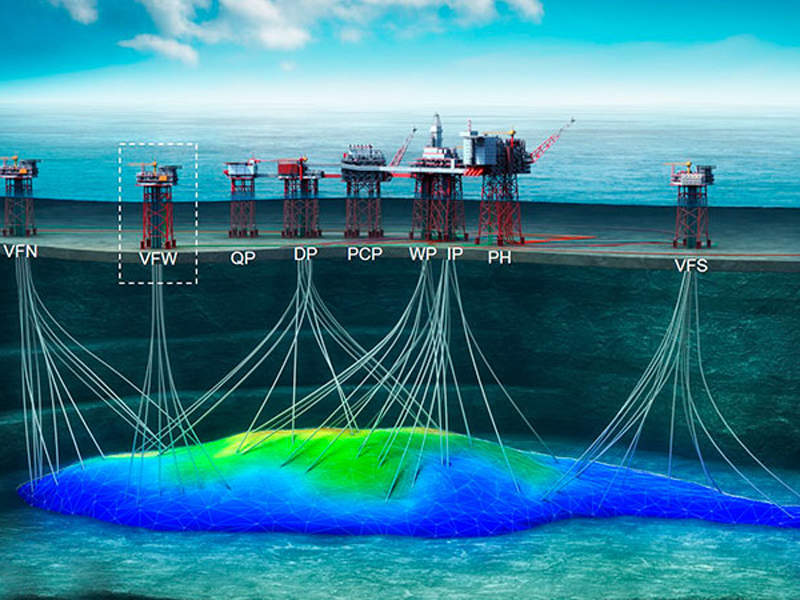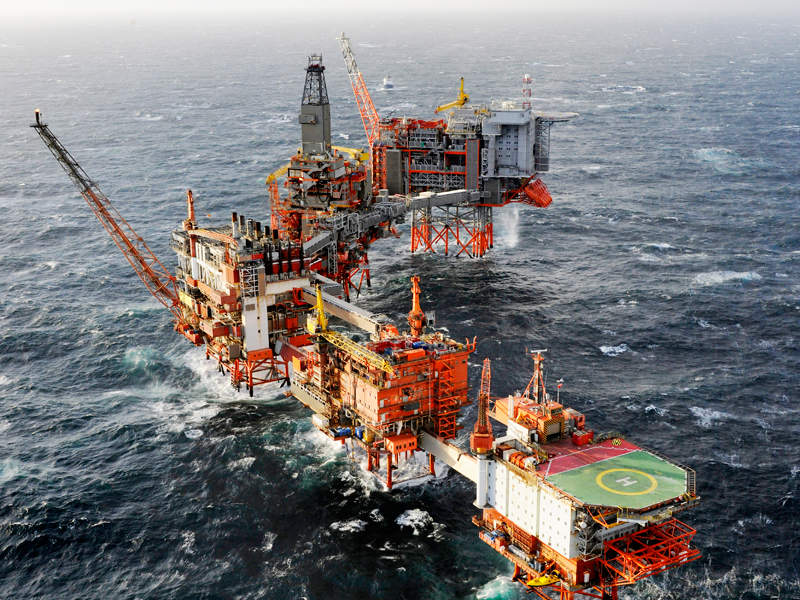The Valhall Flank West project will develop the western flank of the Valhall oilfield, located south of the Norwegian sector of the North Sea.
It is expected to target the Tor formation on the western flank of the Valhall oilfield, which is jointly owned by operator Aker BP (35.95%) and Hess Norge (64.05%).
The partners are making an investment of Nkr5.5bn ($663m) in support of the initiative.
Development works on the project are anticipated to begin by 2018, while first oil is expected by the fourth quarter of 2019.
Valhall Flank West geology and reserves
The Valhall oilfield reservoir is of the Upper Cretaceous chalk group with hydrocarbons contained in the Hod and Tor formations.
The reservoir lies 2,400m below the seabed. The chalk in the Tor formation is fine-grained and has excellent reservoir quality.
Oil and water are noted to flow easily within the formation due to considerable fracturing.
Valhall Flank West is estimated to contain 60 million metric barrels of oil equivalent (Mmboe).
Valhall Flank West development details
The Valhall Flank West field development will include the drilling of production wells, including two that may be converted into water injection wells in the future.
Hydrocarbons will be drained by natural depletion with an option for future water injection.
The production wells will be tied back to a new normally unmanned installation / platform (NUI).
Installation of the new infrastructure will enable hydrocarbons to be recovered from the least developed area on the field, while also facilitating the drilling of new wells in the hydrocarbon-rich areas.
The existing recovery rate from the Valhall field area is 27%.
The Flank West development plan proposes to increase the rate to 40% by 2042.
Details of Valhall Flank West platform
The new NUI will be remotely controlled from the main Valhall field centre.
It is set to be fully electrified and powered from the shore, similar to the existing facilities of the Valhall field.
The platform will be designed to minimise maintenance works and will feature a helideck.
The platform will feature 12 well slots, including six that will be used for the current development plan, while the rest will be retained for future developments.
In addition, the NUI will feature sensor technology, which is intended to facilitate real-time monitoring and condition-based maintenance of the facility.
A two-floor, 154m² emergency shelter will also be built from aluminium for inclusion on the platform.
The shelter will feature changing rooms, a bath, kitchen, meeting rooms, offices and beds. It will be able to accommodate up to 15 people.
The platform’s prefabrication and assembly are slated to begin in May.
Delivery and sail-away of the steel substructure and the topside is expected in May 2019, while the hook-up and commissioning activities are scheduled to begin from August 2019.
Hydrocarbons processing and export
The platform will be tied back to the Valhall field centre via a 4km-long tie-back, including an umbilical and riser system.
Hydrocarbons extracted from the field will be processed at the Valhall field centre and subsequently exported.
Contractors involved
Aker BP, Kvaerner, ABB and Aker Solutions are delivering the platform under an alliance model named the ‘Wellhead Platform Alliance’.
Aker Solutions will be responsible for the engineering and procurement activities related to the platform, while the construction, fabrication, hook-up and commissioning activities will be carried out by Kvaerner.
The design, supply and installation contract for the platform’s electrical, instrumentation, control and telecommunications systems was awarded to Siemens and ABB.
Heerema Marine Contractors was contracted for the transportation and installation of the platform at the field, while Subsea 7 is supplying the site’s umbilical and riser system.
Apply Leirvik was contracted to supply an emergency shelter and helideck for the platform, while Verhoef won the contract to supply aluminium freefall lifeboats.






